Summary. The morning stretching routine of the Schedule for Life includes elements which are similar to Yoga, Pilates, or Tai Chi (photos are below). The routine provides stretching and strength training for most of the major muscle groups. It also uses gravity to provide considerable circulatory and lymph gland stimulation. Remember to always consult with a physician or health practitioner before making changes to your exercise routine.
Process. The elements of this routine are performed in the following order:
- Self Massage – Invigorate and stimulate circulation from head to feet.
- Rolling Abdominal Crunches – Lift the torso and legs into the air while rolling from one side to the other. Repeat several times. This can incorporate the posture Paripurna Navasana (Full Boat Pose) found in Yoga [1].
- Quadriceps Work – From a seated/kneeling posture, lift the entire torso and upper body using only the quadriceps. Repeat several times. This practice incorporates a posture similar to Siddha-asana (The Accomplished or Adept Pose) found in Yoga [1] or Vajra-asana (The Thunderbolt or Diamond Pose) [1]. It can include Supta Virasana (Reclining Hero or Heroine Pose) [1, 2], as well as Simha-asana (The Lion Pose) [1, 2].
- Hamstring Work – Stretch the muscles and hamstring in the back of the legs. This is similar to Janu Sirsasana (Head-to-Knee Pose) found in Yoga [1, 2].
- Back Stretch – From a position of lying on the back, bring the feet up and over the head so that the toes touch the surface just above the head. In Yoga this is referred to as Halasana (Plow Pose) [1, 2], it can also incorporate Salamba Sarvangasana (Supported Shoulderstand) [1] mid-way through. An additional benefit of this practice is that it produces an effect similar to Uddiyana Bandha (Upward Abdominal Lock) [1] because it demands emptying of the abdominal cavity.
- Back Crunch – This is similar to abdominal crunches except they are performed on the stomach and the back muscles are used to lift the torso and legs. In Yoga this resembles the Dhanurasana (Bow Pose) [1, 2]. This can incorporate Bhujangasana (Cobra Pose) [1, 2], as well as Shalabha-asana (The Locust or Grasshopper Posture) [1, 2].
- Back Twist – This is similar to the Bharadvajasana I (Bharadvaja’s Twist) found in Yoga [1], and also resembles Marichyasana III (Pose Dedicated to the Sage Marichi, III) [1].
- Toe Touches – This is similar to Ugra-asana (The Noble Pose) found in Yoga [1] or the more intensive Paschimottanasana (Seated Forward Bend) [1]. This is a seated version of Uttanasana (Standing Forward Bend) [1] without the benefit of blood rushing to the head which was already achieved in the back stretch (#5) mentioned above.
- Push Ups – A very traditional and generic exercise, the beginning posture is similar to the Plank Pose found in Yoga [1]. It also incorporates a posture similar to Chaturanga Dandasana (Four-Limbed Staff Pose) [1]. Urdhva Mukha Svanasana (Upward-Facing Dog) [1] can be integrated before or after.
Photos. Photos are provided below in order. These photos are of Gregory Paul Johnson in his small house the Mobile Hermitage.
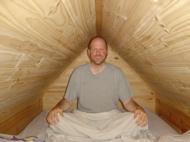 |
 |
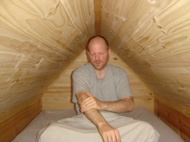 |
 |
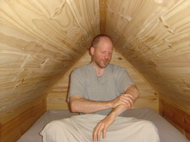 |
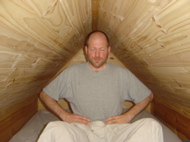 |
 |
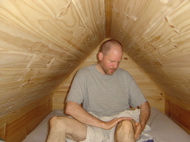 |
 |
 |
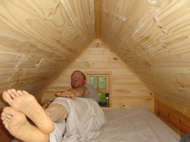 |
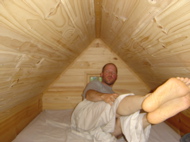 |
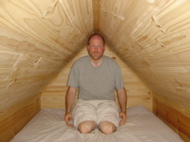 |
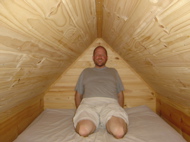 |
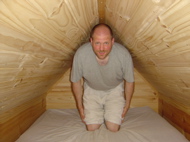 |
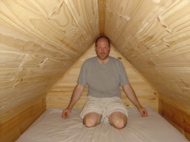 |
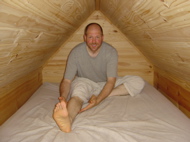 |
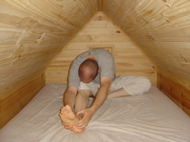 |
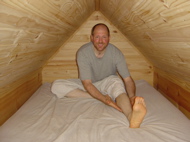 |
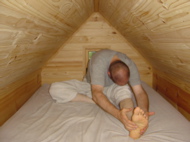 |
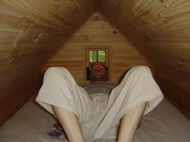 |
 |
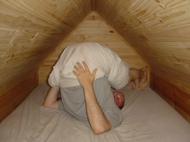 |
 |
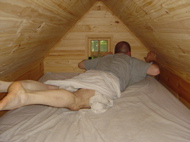 |
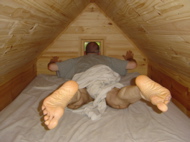 |
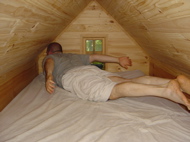 |
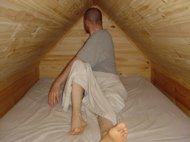 |
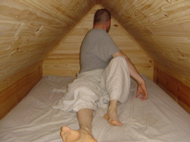 |
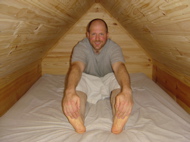 |
 |
 |
 |
Additional Resources. The process described above can be enhanced by further study of Yoga. Here are some resources that can help.